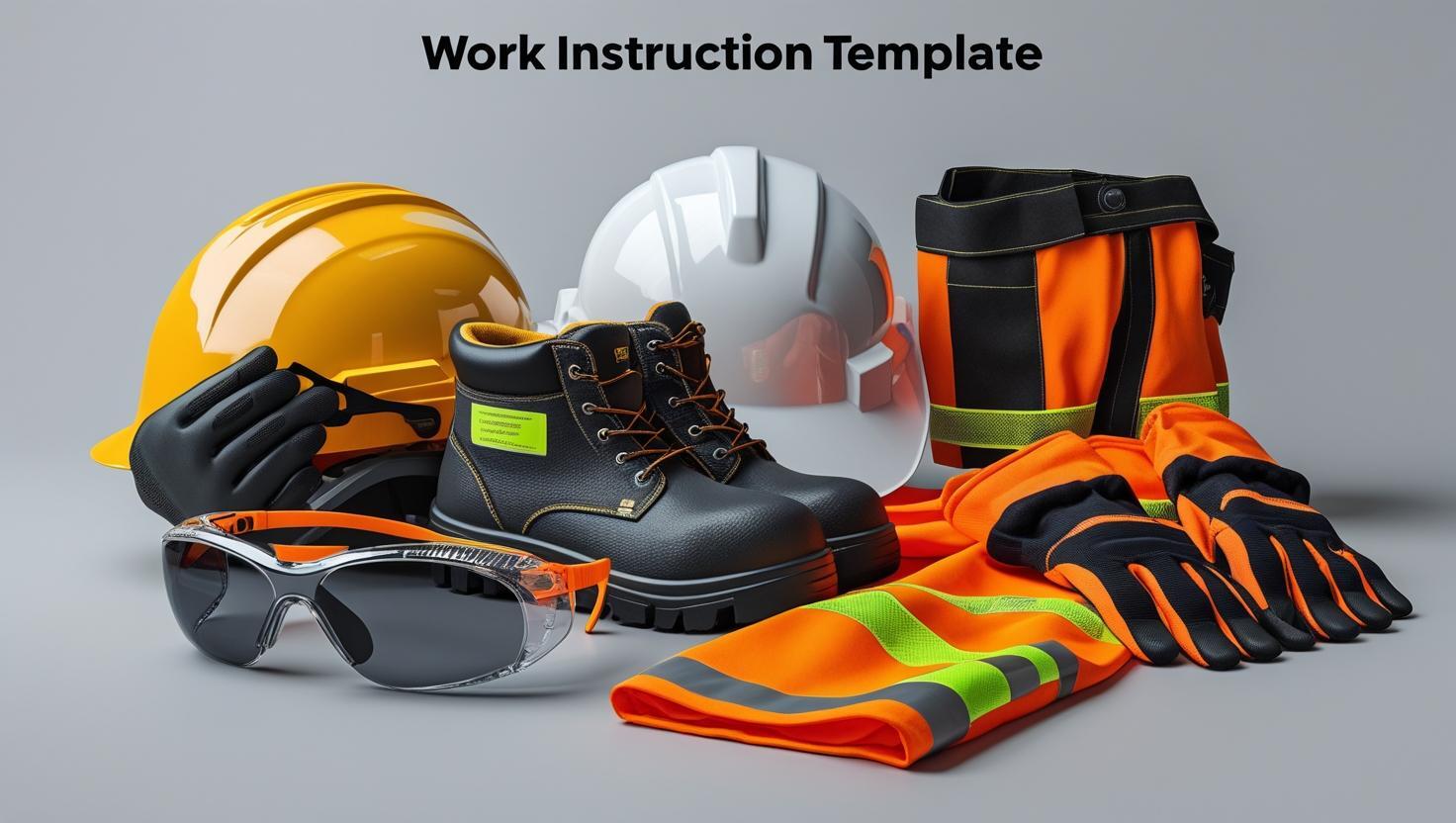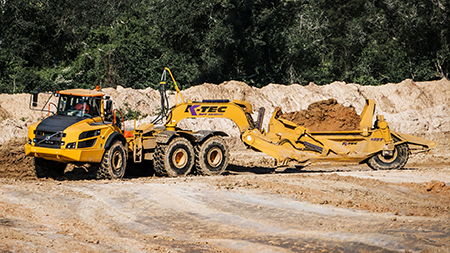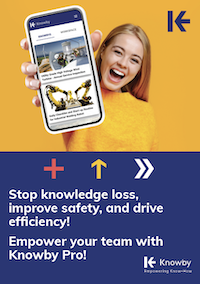A Template for Creating a Step-by-Step Work Instruction using Knowby

August 8, 2025

Work instructions are critical for ensuring consistency, quality, and efficiency across teams, especially in industries where safety, compliance, or system accuracy matter. But too often, businesses rely on outdated methods—paper instructions, scattered PDFs, or overly complex documentation systems that slow teams down. That’s where digital work instruction templates come in, offering a structured, repeatable, and scalable way to transfer knowledge.
What is a Work Instruction Template?
A work instruction template is a standardised document format designed to guide team members through specific tasks or procedures. It provides step-by-step directions in a clear and concise layout that helps reduce mistakes and streamline training. It also helps ensure that tasks are performed consistently across the organisation.
Work instruction templates are especially useful in:
- Manufacturing & assembly
- Equipment servicing
- IT systems (e.g., SAP, Oracle, Xero)
- Safety compliance procedures
- Employee onboarding and training
What is the End Result of Your Work Instruction?
The goal of creating a work instruction (what we call a knowby) is to deliver clear, visual, and easy-to-follow step-by-step instructions that empower any user—regardless of experience level—to complete a task safely, independently, and efficiently.
Your knowby should serve as a live, current work instruction: visual and complete with the necessary tools to complete the task at hand. Each step should be intuitive and actionable, ideally supported by visuals or video using the Knowby platform to guide users through each phase of the task. In the setting of a manufacturing task, for example, it should include all the required PPE, tools, and hazard warnings.
How to Create the Perfect Work Instruction and What Your Step-by-Step Template Should Include
To provide a clear example of an effective work instruction template, let’s create one that is useful in a manufacturing environment:
Step 1 - Flag Any Potential Hazards Upfront
Before beginning any instructions, highlight known hazards. This includes physical, chemical, electrical, ergonomic, or procedural hazards.

Best practices:
- Add a dedicated “Hazards and Safety Precautions” section at the beginning.
- Use visual icons to communicate hazards (fire, electrical, chemical, etc.).
- Where applicable, reference relevant SDS (Safety Data Sheets) or safety manuals.
- Reiterate hazards again within the specific step where the risk appears.
Examples:
- Hazard: Sharp edges – Wear cut-resistant gloves
- Hazard: High voltage – Isolate power before beginning Step
- Hazard: Confidential information - ensure knowby remains restricted to Finance Team
Use Knowby’s visual markup features or icons to reinforce the warnings.
Step 2 - PPE (Personal Protective Equipment)
Clearly state what PPE is required before starting the task. This section should be visible early in the instruction flow.
Examples include:
- Eye protection
- Gloves (type-specific: e.g., nitrile, cut-resistant)
- Steel-toe boots
- Respiratory masks
- Hearing protection
Tip: Use images or icons for each PPE item. This visual cue reinforces compliance and helps users identify what they need at a glance.

Step 3 - Equipment or Tools Required
List all the tools, machinery, or materials necessary to complete the job.
Break this into categories if helpful:
- Hand tools: Screwdrivers, wrenches, hammers
- Power tools: Drills, grinders, heat guns
- Materials/consumables: Lubricants, fasteners, cable ties
- Digital tools: Devices or software interfaces if applicable
Best practices:
- Add part numbers, model numbers, or specifications
- Include an image of each tool if possible
- Hyperlink or embed manuals or datasheets if needed

Step 4 - Build The Steps For Your Work Instruction
This is the core of your work instruction. Each instruction should be a clear, single action that guides the user confidently through the task. You have two main ways to build your step-by-step guide in Knowby:
|
Option 1: Build steps manually |
Option 2: Use Knowby’s video or document intelligence |
|
|
Option 1: Build Steps Manually
This method allows you to build instructions using materials that you have to hand. Use this when you're working from scratch, transcribing from a paper SOP, or outlining a new task based on SME (Subject Matter Expert) input.
How to build manually:
- Step Title – Summarise the action in 4–6 words.
E.g., “Shut Off Power Supply” - Instruction Body – Describe the action using plain, active language.
E.g., “Turn off the main breaker and lock it out using a padlock and tag.” - Media Upload – Add looped videos, photos, or diagrams for each step.
- Annotations – Use arrows, highlights, or callouts to focus attention.
- Hazard and PPE Icons – Add where relevant.
- Confirmation Points – Include checks like “Ensure all fasteners are secure.”
You can you this knowby as a guide when you start the process or you can view the steps now on how you go about creating a knowby from scratch.
Option 2: Use Knowby's Video or Document Intelligence
Knowby also allows you to convert narrated videos or PDFs into step-by-step guides, saving significant time in the SOP creation process.
⚠️ Note: The AI does not create new instructional content from scratch—it helps extract structure and segment the task using existing video footage and voiceover.
What it does:
- Automatically detects actions and voiceover breaks in your uploaded instructional video.
- Creates a draft Knowby with step markers and loop video snippets.
- Extracts transcribed audio as editable text in each step.
- Allows you to quickly review and refine each step, add safety notes, and include hazard or PPE indicators.
How to use:
- Upload a narrated video walkthrough of the task.
- Let Knowby’s Video Intelligence segment the video into logical steps.
- Review, edit, and enhance each step with supporting visuals or notes.
- Add or adjust text instructions, hazard alerts, and confirmation steps.
General Tips for Both Methods
- Be consistent: Whether you're writing or editing AI-generated content, use uniform formatting and tone.
- One action per step: This helps users stay focused and reduces mistakes.
- Always review the full flow: Run through the Knowby from a user’s perspective—does each step naturally lead to the next? This is why videoing the actual process from the user’s perspectiveness is a great way to do this accurately.
- Use visual hierarchy: Bold keywords, use bullet points, and keep steps easy to read.
By combining manual creation with Knowby's Video Intelligence, you get the best of both worlds: speed and structure from AI, plus the accuracy and customisation your task demands.
Here’s what a step-by-step work instruction looks like in Knowby.
How Knowby Reinvents Work Instructions Digitally
Knowby transforms traditional, static instruction templates into dynamic, mobile-friendly guides called knowbys. These interactive guides break down any task into simple, visual instructions that are easy to create, follow, and update. With Knowby, teams can embed videos, annotated images, or screen recordings directly within each step to enhance clarity and reduce misinterpretation—especially for complex or technical processes.
Because Knowby is cloud-based, updates can be made in real time, eliminating version control issues and ensuring everyone is working from the most current instructions. Sharing is also seamless: instructions can be distributed instantly via direct links or QR codes. This makes them accessible at the point of need, even on the factory floor, in the field, or at a computer terminal.
In addition, Knowby enables teams to track usage, gather feedback, and identify opportunities for improvement through built-in analytics.
It's effortless to update. Even if that employee didn’t create the initial instruction, they feel some ownership of it if they can make some improvements to it.
Final Review Checklist
✅ All hazards identified and documented
✅ PPE listed with icons and images
✅ Tools/equipment clearly described and illustrated
✅ Steps are concise, actionable, and visual
✅ Visual aids used in every step
✅ Critical actions verified
✅ Hazards called out again in specific steps
✅ SOP tested by a first-time user for clarity
Work Instructions Examples
Knowby Pro, with its versatile features and user-friendly interface, is rapidly becoming an essential tool across various industries. In manufacturing, construction, and health and safety, Knowby Pro offers clear, accessible video instructions and detailed text guides that simplify complex procedures.

Personal Protective Equipment | Construction Safety
One moment without the right personal protective equipment (PPE) can mean a lifetime of injury. Follow the step-by-step manual to ensure your safety.

Operator Training | K-Tec ADT Scraper
This work instruction covers the starting procedure for operating a K-TEC ADT scraper behind a Volvo articulating dump truck.

Procure to Pay | Create a Purchase Requisition Instruction
In this work instruction, we'll be creating a purchase requisition. It's the first step in the procure-to-pay process.
Conclusion
Creating the perfect SOP with Knowby isn’t about writing paragraphs—it’s about guiding action. When each instruction is simple, visual, and safe, your team will work more confidently, reduce errors, and improve productivity.
Use this guide as a standard when creating your work instructions, and continually refine them as tasks evolve. Your work instructions and SOPs should work for the user, so keep this in mind.

Comments